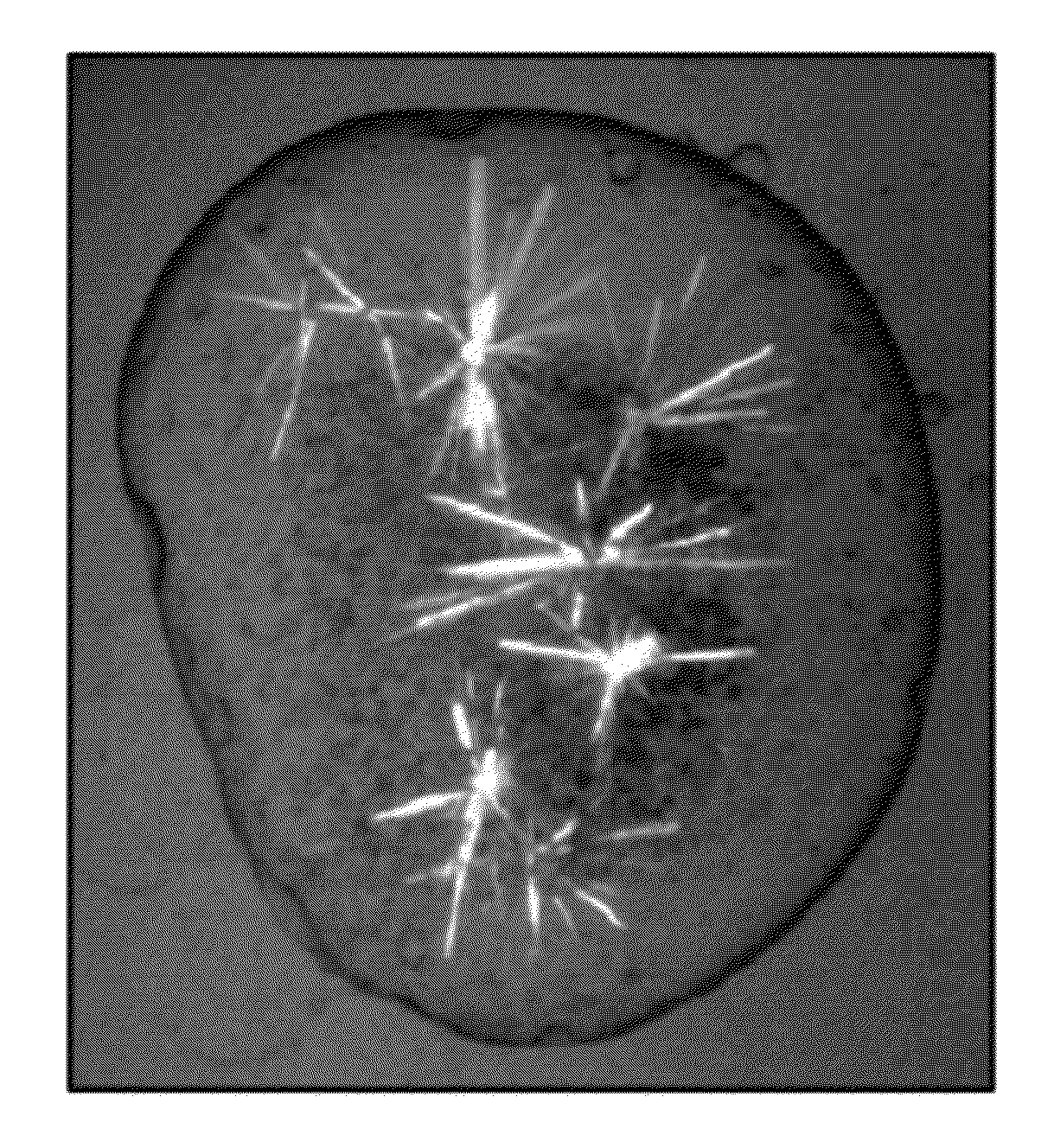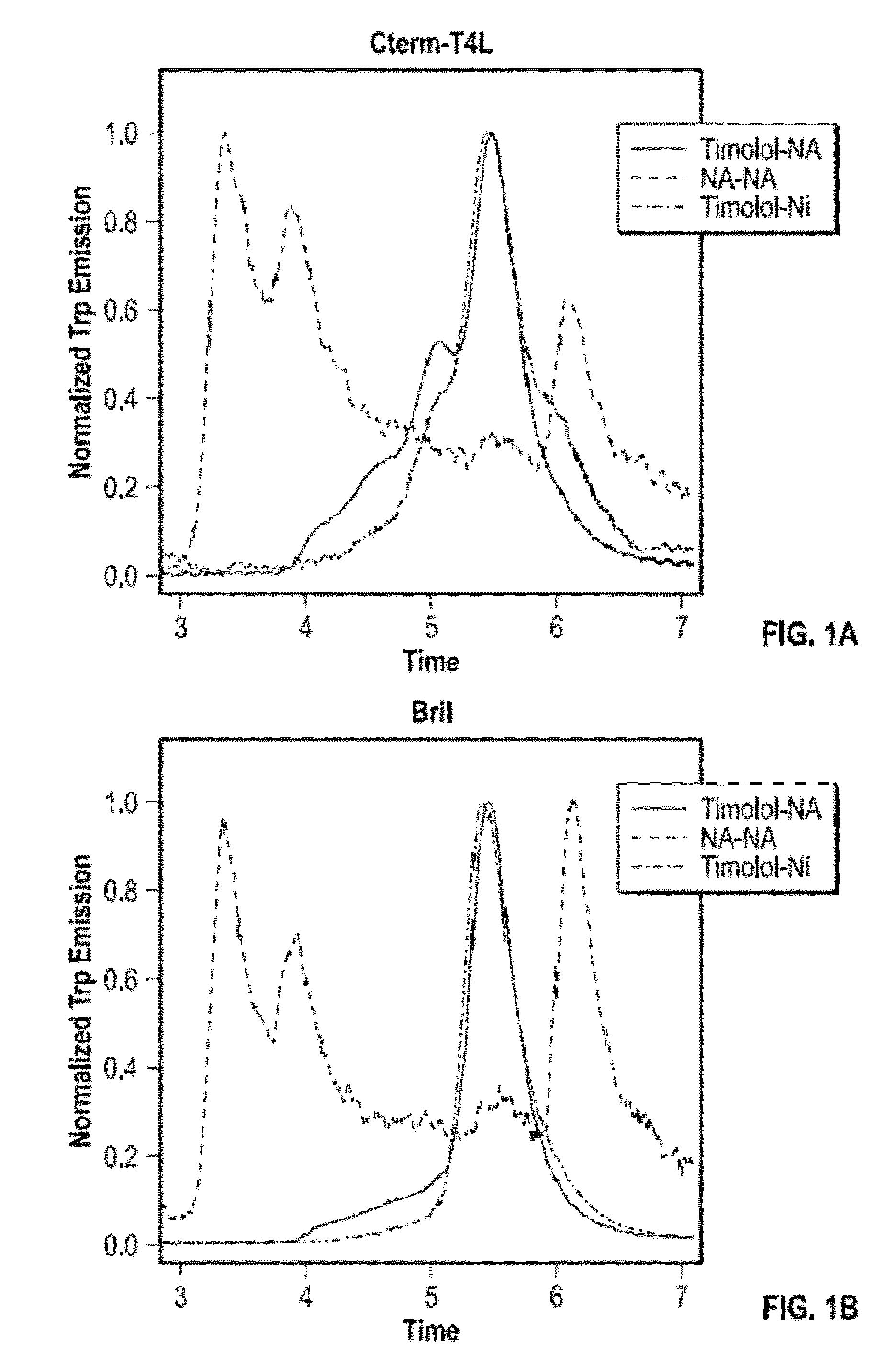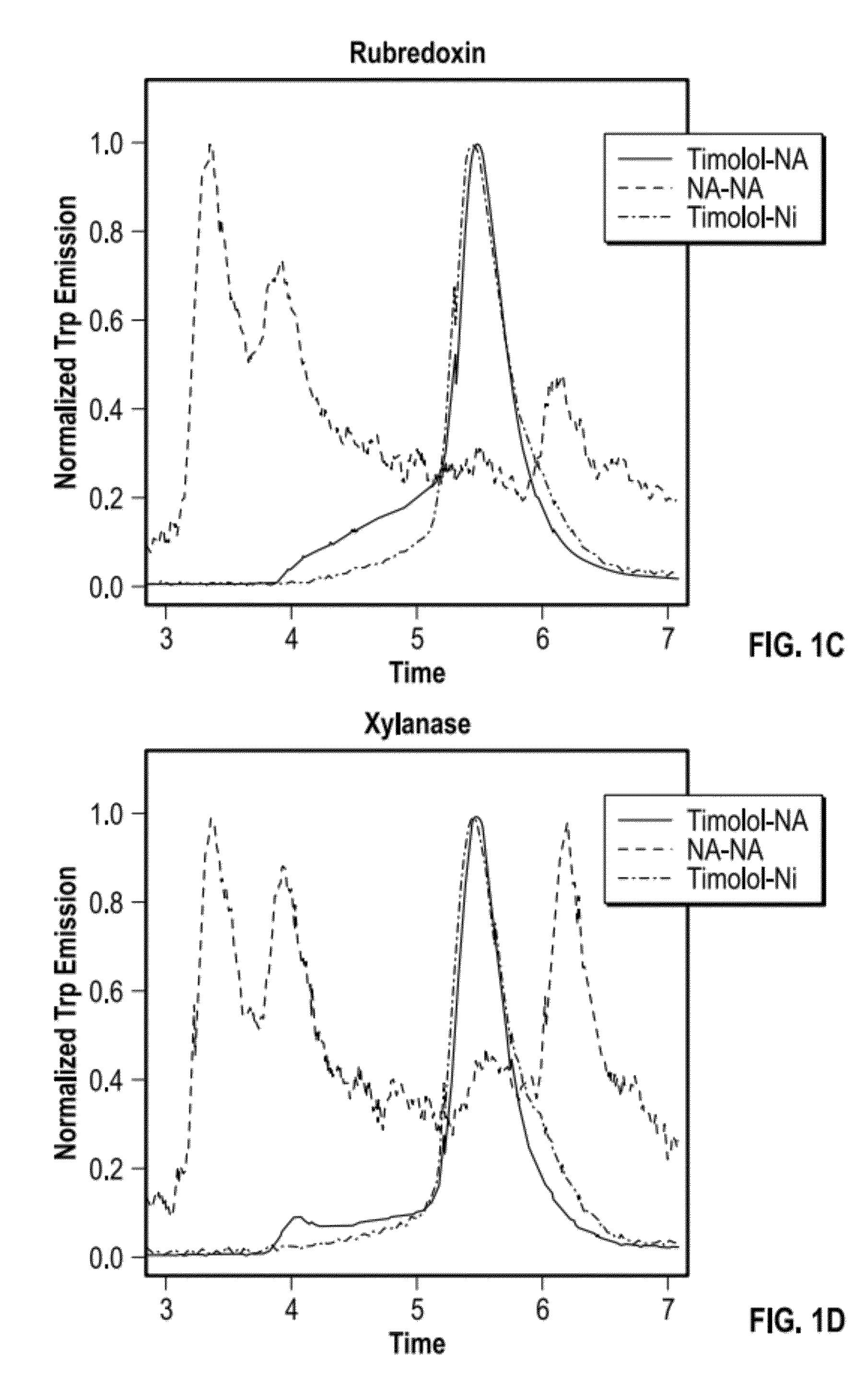Novel fusion partners for the purpose of crystallizing g-protein coupled receptors
a fusion partner and g-protein technology, applied in the direction of cytochrome, peptides, polypeptides with his-tags, etc., can solve the problems of lack of protein surface area and difficult crystallization of gpcrs in unmodified form
- Summary
- Abstract
- Description
- Claims
- Application Information
AI Technical Summary
Benefits of technology
Problems solved by technology
Method used
Image
Examples
example 1
Data Mining to Identify Potential Fusion Partners for Incorporation into GPCRs
[0071]An initial screen of the Protein Data Bank (PDB; Worldwide Protein Data Bank, www.wwpdb.org) was carried out to identify potential new fusion partners that satisfy the criteria listed in Table 1 above: candidate N and C termini of potential fusion partner should be separated by no more than 15 Å; molecular weight of less than 25 kD; crystals of potential fusion partner should have diffraction resolution better than 3 Å; crystals of potential fusion partner should form in at least two different chemical conditions; and crystals of potential fusion partner should result in more than one space group. The following potential fusion partners were identified by this screen: E. coli flavodoxin (PDB ID:1AG9, MW: 20 kD), M. tuberculosis hypothetical protein, (PDB ID: 2ASF, MW: 15 kD), E coli CHEY (PDB ID: 1JBE, MW: 14 kD), Bos taurus BPT1 (PDB: ID: G6X, MW: 7 kD).
example 2
S1P1-Fusion Partner Proteins
[0072]S1P1 is a GPCR that binds the lipid signaling molecule sphingosine 1-phosphate (SIP), a circulating lipid that binds to five GPCRs termed S1P1-5. S1P1 selectively regulates physiological functions in the immune and cardiovascular systems, including immune cell trafficking and the maintenance of endothelial integrity. Four novel S1P1-fusion partner proteins were produced and evaluated as described below.
[0073]Each of the following proteins was evaluated as a potential fusion partner: T4 lysozyme C-terminal fragment (“Cterm-T4L” PDB ID: 2O7A, T4 Enterobacteria phage, 14 kD); flavodoxin (PDB ID: 1I1O, Desulfovibrio vulgaris, mutant Y98H, 16 kD); Cytochrome b562 RIL (“Bril” PDB ID: 1M6T, Escherichia coli soluble cytochrome b562, 12 kD); and chemotaxis protein cheA (PDB ID: 1TQG, CheA phosphotransferase domain from Thermotoga maritima, 11.9 kD).
[0074]Each potential fusion partner was incorporated into S1P1 as follows: cDNA constructs encoding fusion part...
example 3
β2 Adrenergic Receptor Fusion Partner Proteins
[0082]A panel of candidate fusion partners was each inserted into the β2-adrenergic receptor (β2AR; b2 adrenergic receptor), and each resulting β2AR-fusion partner protein was expressed, extracted, and purified to determine various properties. β2AR fusions were constructed, expressed, and evaluated for the following β2AR-fusion partner proteins: β2AR-T4L, β2AR-C-term T4L, β2AR-Bril, β2AR-rubredoxin, β2AR-xylanase, and β2AR-flavodoxin.
[0083]Using the previously solved X-ray crystal structure of the β2 adrenergic receptor fused to T4-lysozyme, designated β2AR-T4L (“Beta-2 adrenergic receptor / T4-lysozyme chimera” PDB ID 3D4S) as a guide, candidate fusion partners were inserted into β2AR at positions that correspond to directly replacing the fused T4L sequence in the original β2AR-T4L (i.e., PDB ID 3D4S). Therefore, the junction sites remained identical to the original β2AR-T4L protein. All expression constructs carried an N-terminal hemaggl...
PUM
| Property | Measurement | Unit |
|---|---|---|
| total volume | aaaaa | aaaaa |
| temperature | aaaaa | aaaaa |
| concentration | aaaaa | aaaaa |
Abstract
Description
Claims
Application Information
 Login to View More
Login to View More - R&D
- Intellectual Property
- Life Sciences
- Materials
- Tech Scout
- Unparalleled Data Quality
- Higher Quality Content
- 60% Fewer Hallucinations
Browse by: Latest US Patents, China's latest patents, Technical Efficacy Thesaurus, Application Domain, Technology Topic, Popular Technical Reports.
© 2025 PatSnap. All rights reserved.Legal|Privacy policy|Modern Slavery Act Transparency Statement|Sitemap|About US| Contact US: help@patsnap.com



